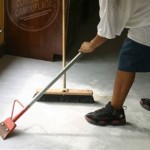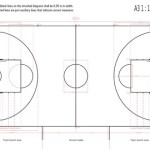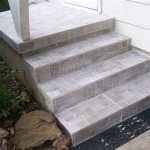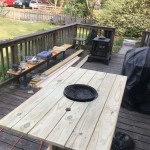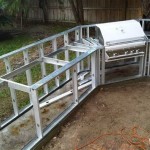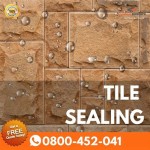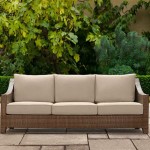Essential Considerations for Outdoor Kitchen Cinder Block Frames
Creating an outdoor kitchen is a fantastic way to bring the beauty of the outdoors into your culinary adventures. A well-designed kitchen requires a solid foundation, and the frame that supports your kitchen's structure plays a crucial role. Cinder block frames offer durability, affordability, and a customizable base for your outdoor oasis.
### 1. Material SelectionCinder blocks, also known as concrete blocks, are dense, hollow blocks that provide exceptional strength and stability. They withstand moisture, fire, and extreme weather conditions, making them an ideal choice for outdoor use. Opt for high-quality blocks with consistent dimensions and minimal defects for a sturdy frame.
### 2. Footing and ReinforcementA strong foundation is essential for preventing the frame from settling or shifting over time. Dig a trench for the footing, which is a layer of concrete that provides a solid base for the blocks. Insert rebar into the footing trench to reinforce the concrete and enhance the frame's stability.
### 3. Block LayingLay the cinder blocks in a running bond pattern, where each block alternates with the one above and below it. Use construction adhesive between the blocks to ensure a secure bond. Stagger the joints between the courses (layers) to improve strength and stability. A level and plumb line are crucial to ensure a straight and even frame.
### 4. Corner ReinforcementCorners are critical points of stress in any structure. Reinforce the corners of your frame by adding additional cinder blocks to create an L-shape. Secure the corner blocks with galvanized steel corner braces for increased rigidity.
### 5. Height and DimensionsThe height and dimensions of the frame depend on your kitchen design and requirements. Consider the height of your countertops and appliances when determining the frame's height. The length and width should allow for ample counter space and storage.
### 6. Drainage and VentilationProper drainage is crucial to prevent water from accumulating and damaging the frame. Install drain holes at the bottom of the frame to allow water to escape. Ventilation is also important for dissipating heat and moisture. Consider adding vents or openings in the walls of the frame.
### 7. Finishing DetailsOnce the frame is complete, you can add finishing touches to enhance its appearance. Apply a stucco or paint finish to protect the cinder blocks from moisture and give them a polished look. You can also add decorative elements such as tile or stone veneer to customize the frame and match the overall aesthetic of your outdoor kitchen.
By following these essential considerations, you can create a durable and aesthetically pleasing cinder block frame that will serve as the solid foundation for your outdoor kitchen. With proper planning and attention to detail, you can enjoy the benefits of an outdoor kitchen for years to come.

Outdoor Kitchen Cinder Block Frame Designs How To Build An Out Of Concrete Small Home

Cinder Block Outdoor Kitchen Pros Cons 8 Step How To Build Guide
Outdoor Kitchens Steel Studs Or Concrete Blocks Yard Ideas Blog Yardshare Com

Outdoor Kitchen Construction Build An Landscaping Network

Diy Outdoor Kitchen With Cinder Blocks

Outdoor Kitchen Framing 11 Helpful Facts You Should Know

Outdoor Kitchen Construction Build An Landscaping Network
Outdoor Kitchens Steel Studs Or Concrete Blocks Yard Ideas Blog Yardshare Com

Build Your Own Outdoor Kitchen Concrete

How To Build An Outdoor Kitchen Ep 1 Howtospecialist Step By Diy Plans
Related Posts

